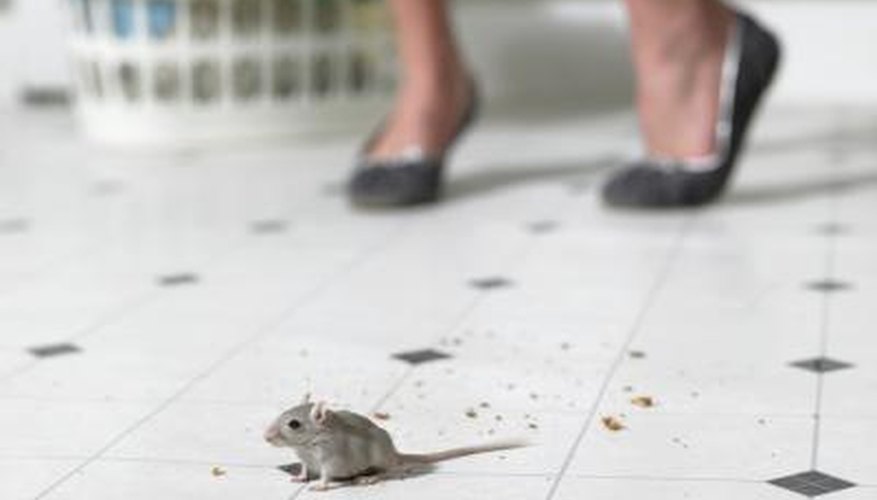Some people are horrified by mice, while others regard them as cute creatures. In either case, there is no denying that mice are destructive. They can chew through almost anything, especially cardboard boxes that are often used for storage. Once they have gained access, mice will shred your expensive bedding to make a soft, warm bed of their own. Preventing access and using mouse-proof storage materials will help secure your bedding.
Search the storage area for mouse droppings, the most obvious sign of a mouse infestation, which can ruin your bedding. Sweep droppings into a dustpan and dispose of them in a trash bag. Wear gloves to guard against touching them, as they could carry disease, explains the City of Pittsburgh. Do not use a vacuum to remove mouse droppings because the exhaust could send particles back into the air and affect your lungs. Clean the area with disinfecting cleaner and paper towels. Dispose of the towels with the same trash.
- Some people are horrified by mice, while others regard them as cute creatures.
- Search the storage area for mouse droppings, the most obvious sign of a mouse infestation, which can ruin your bedding.
Look for openings where mice could gain access, using a flashlight if necessary. Any opening larger than one-quarter inch, or the size of a pencil eraser, is large enough for a mouse. Check higher areas, as mice can climb inside walls to find openings in ceilings and around windows. Fill each opening with spray insulating foam, which expands and dries hard. Trim excess foam with a utility knife once dry.
Choose humane mousetraps, available in many retail stores, that catch mice and allow you to release them back into nature where they belong. Poison, snap traps and glue traps cause the animal to suffer unnecessarily and leave dead mice in your storage area. This can cause strong, offensive odours on your bedding as well as increasing the possibility of spreading disease, reports the Utah State University Cooperative Extension. Arrange mousetraps filled with appropriate bait such as peanut butter along the walls.
- Look for openings where mice could gain access, using a flashlight if necessary.
- Choose humane mousetraps, available in many retail stores, that catch mice and allow you to release them back into nature where they belong.
Place laundered bedding materials such as blankets, sheets and pillows inside deep, heavy-duty plastic storage containers with secure lids. Laundering removes the possibility of foreign materials attracting mice. Place container lids on top and snap them down. Secure the lids to the storage containers with packing tape or duct tape, wrapping the entire seam around the lid. Use as much tape as necessary to form a tight seal. Stack the containers in the storage area. Scatter mothballs in the room as deterrents, as suggested by the Fund of Animals Wildlife Rehabilitation Center.
- Place laundered bedding materials such as blankets, sheets and pillows inside deep, heavy-duty plastic storage containers with secure lids.
- Secure the lids to the storage containers with packing tape or duct tape, wrapping the entire seam around the lid.
TIP
A clean environment is the least mouse-friendly. Block openings in a seriously infested storage area with sheets of metal.
WARNING
To prevent spreading disease, never handle dead mice with your bare hands.
